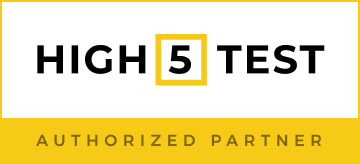The strengths-based approach has been recently gaining popularity amongst employees and leaders alike. It has been shown to provide individuals with a plethora of unique benefits. This is especially true if you compare a strengths-based approach with the standard weakness-oriented one.
However, many people are still quite skeptical about this approach. They wonder if it can truly work for anyone. In addition, some individuals believe there is not enough scientific support for them to use this new strengths approach, or that it takes more time and effort to implement.

The reality is that a strengths-oriented approach offers a plethora of amazing benefits to anyone. In this article, we will discuss what this approach entails and why it is so beneficial.
What is the Strengths-Based Approach?
The strengths-based approach focuses on utilizing your strengths and growing your abilities rather than focusing on fixing your weaknesses.
By harnessing your existing abilities, you can stay more confident and boost your resilience at work. The strengths-based approach is based on the belief that every person has something positive and valuable to offer, no matter what their background is or what industry they work in.
Those using this approach believe it is far more efficient to find new ways to apply your strengths instead of stressing over weaknesses.
There are many uses for the strengths-based approach. For instance, there is a strengths-based leadership style, strength-based education, and even strengths therapy.
The most common way to apply this approach is in the workplace, where it is used to boost confidence and productivity.
It can also make individuals more positive as well as motivated. It is an individual-focused approach, given that every person has unique abilities they can offer to their team.
Many believe the approach is empowering, as it shifts how one thinks about themselves. By learning about their strengths, individuals are more empowered to take up new opportunities and take risks.
There are a plethora of other benefits that come along with this approach, too, which we will discuss further. It shifts your approach from a “can’t do” to a “can do” attitude, and also contributes greatly to team goal development.
How Does the Strengths-Based Approach Work?
As stated above, people can apply their strengths in many different ways. What a strengths-based approach in one industry looks like could be quite different from what it is in another field.
After all, everyone has a unique strengths profile. However, the general workings of the approach tend to be similar, and they are good to know for your personal development.
In general, the first step to using this approach is identifying your strengths. You need to take a strengths test to get the most accurate results. One example of a fantastic assessment is High5, which gives you a highly detailed strengths profile for you to utilize when using the strengths-based approach.
After that, consider how you currently use your strengths. Note how the strengths in your strength report contributed to your success and how they helped you overcome adversity. Once you are done with that, brainstorm where you do not use your strengths much currently.
Make a goal to use your strengths more in those settings. Make plans for how you will use those strengths. This helps redirect your mindset into a more positive, strength-oriented one instead of being focused on avoiding using your weaknesses.
Principles Used in the Strength-Based Approach
There is a general principle behind the strengths-based approach that is crucial to understand if you want to successfully use this method.

This principle is the idea that is focused on the positive and viewing your life through the lens of opportunity plus growth is much more ideal than looking at what you are incapable of.
Weaknesses overshadow your positive nature, and they hold you back from taking risks and being confident. This is why, principally, those using the strength-based approach are opposed to this.
5 Examples of Strengths-Based Approach
The strengths-based approach is probably being used by people you know and admire on a daily basis. It is clear that it is exceptionally beneficial. But, what does this approach look like in action? How do people apply it to their everyday lives and work?
Many people have these questions, which is why we have compiled a list of a few examples that detail how strengths-based approaches can be used in the real world. Here are just a few examples:
1. Asset-Based Community Development
How can strengths-based approaches be implemented on a community-wide level? The answer is Asset-Based Community Developed, often shortened to ABCD. It involves getting the individuals in a community energized about progress and helping them discover their unique abilities.
People find what the community does well, and how they achieved those successes. Then, these strategies are used in settings where the community needs more work. That way, successful strategies can help the community progress further.
2. Performance Reviews
Many corporations use performance reviews to identify if employees are engaged and what their strengths are. They can see what each individual is skilled at and what abilities they lack.
Some organizations choose to use the reviews as a way of identifying strengths so they can be later improved. This can boost productivity, positivity, and achievement in employees.
3. Strengths during a crisis
It is far easier to focus on your strengths and stay positive when you are happy and calm. On the other hand, it gets much more difficult if and when you enter a crisis. The immediate response most people have is to panic and start using a negative mindset.
However, a strengths-based approach helps you realize that you can use your strengths at any time, especially during a crisis. It contributes to a more secure feeling and boosts problem-solving skills.
4. Strengths during interviews
Many interviewers will ask you about your most successful moments and why they should hire you. Some of the greatest employees get hired due to their ability to highlight their strengths during interviews.
They state directly how their successes were due to their strengths and how their strengths benefit their team. Those who do not use the strengths-based approach might not be aware of their skills or be overly humble, so they do not take advantage of this opportunity.
5. The initial push
For some individuals, going to therapy is an immensely difficult task. It requires mental strength to do this. As such, it is important for therapists to recognize this as a strength.
It is crucial to state to the client: “I see you struggled to do this, but the fact you are here shows your resilience.” From there, great therapists utilize the client’s resilience to help them tackle other problems as well.
How To Use the Approach in Coaching and Counseling?
There is a wide array of applications that a strengths-based approach can be used for. In fact, it has been shown to be useful for anything from uniting startups to educating children or dealing with mental health issues. Another common use of the approach has to deal with coaching platforms and counseling.

Coaches and counselors have to be masters of the strength-based approach to benefit their clients optimally. One way that coaches could use the strength-based approach is at the very beginning of the session, to recognize the individual’s strengths.
Tell the client that you know this is difficult to do, but it proves they are resilient. This helps create an initial bond between the two individuals. Then, the coach can go further into finding other strengths as well.
For coaching and counseling, solving problems could be done through a strength-oriented lens. For instance, instead of trying to find the client’s weaknesses and addressing those, the coach could focus on finding strengths and addressing new ways of applying those strengths.
This helps boost the client’s confidence and is more efficient as well.
Tools Needed for Utilizing the Strengths-Based Approach
A strengths-based approach is best implemented when you have the right tools with you. There are many ways to properly implement such an approach, but one of the best ways to maximize your positive outcomes with the approach is to use some of the following tools and tests:
HIGH5TEST
The High5 assessment is recognized as one of the most accurate and effective strength analysis tests on the internet. It is no wonder why it is trusted by hundreds of thousands of individuals, including even Fortune 500 Companies.
The test helps you understand your top abilities and gives you a very detailed strengths report. It can help you understand how you use your strengths on a daily basis and create plans for boosting your strengths in the future.
CliftonStrengths
Another popular strengths assessment you can take online is called CliftonStrengths or StrengthsFinder. This is offered by Gallup, and the test is based on decades of strengths research by the renowned psychologist Dr. Donald O. Clifton along with his team.
Similarly to High5, the test can help you better understand your overall strengths and skill trends. It can be very useful in finding new ways to boost your skills.
VIA Inventory of Strengths
The last two tools we mentioned were strictly strengths assessments. However, the VIA Inventory of Strengths test, also known as the Values in Action assessment, is different. It also covers your values or the principles that are dear to you.
Values and strengths often go hand in hand. They are both important to understand. So, this test can give you further insights into ways you use your strengths and ways to improve.
What are the Benefits of the Strengths-Based Approach?
The strengths-based approach has become extremely popular in recent years. And, it is for good reasons. Learning about your strengths, acknowledging them, and finding new ways to apply as well as grow your abilities all offer tremendous benefits to you.
One of the ultimate benefits associated with using the strengths-based approach is becoming more positive and confident. When you only focus on your weaknesses, you start to give yourself solely in a negative light.
This makes you more likely to quit or even increase the risk of depression. On the other hand, knowing your strengths boosts positivity and resilience.
Another great benefit of knowing your strengths is boosting your productivity. If you focus on doing what you are naturally good at, you are far more productive and efficient. This leads to you accomplishing more of your goals, boosting your satisfaction, and helping you become more emotionally connected with your career.
10 Techniques and Activities for the Strengths-Based Approach
As someone interested in using a strength-based approach, you might be curious about the ways you can implement it into your daily life. The reality is that there are many different activities you could do to use your strengths.

And, your strengths are unique, so the key is to discover and use them as much as possible in any way you like. If you need some inspiration on how to use the approach, take a look at some of these activities:
- Asking the client what they enjoy doing most and what they are passionate about.
- Allowing the client to give open-ended answers and exploring the past through narratives.
- Looking back on your successes and seeing which skills led you there.
- Thinking about solutions to problems with the client by looking at how they handled adversity previously and ways their strengths could help.
- If you are a coach or therapist visiting the client’s home, recognize it is their space. Then, find a way to make it comfortable for them so they can be open and honest about their abilities.
- Finding how someone got their strengths and considering the cultural, religious, and ethnic background of the person you speak to.
- Ask the client what motivates them. An individual’s passion often connects with their strengths and is used as fuel for the strength-based approach.
- Pick up on cues and body language from the client. Notice when they feel comfortable and uncomfortable. When an individual is confident and comfortable, they are likely using their strengths.
- Write a gratitude journal that shows all of your successes and helps with staying positive.
- Ask the client to talk about a time they were at their best (flourishing) and keep track of the potential strengths they used in that time. Then, discuss those strengths with the client.
What are the Disadvantages of This Approach?
There is no such thing as a perfect self-development strategy. As with any approach, the strength-based style also has some flaws. It is important to be aware of these drawbacks so you are extremely informed on the pros and cons of this approach.
One of the main drawbacks to using a strength-based approach is the potential for becoming overly confident.
You might only start to see the positives, which could twist the reality of the situation you are in. It could make you confident enough to take a risk, which could turn out to be a miscalculation.
Another common drawback to the strength-based approach is how much time it takes. It takes time to realign your energy from the standard weakness-based approach to one grounded in strengths. After all, it requires a change in your perspective that is quite major.
Can it Improve Mental Health?
Some individuals have found that using a strength-based approach has benefits for one’s mental health. While this was initially just a thought circulating in the psychology field, it is now understood to be a reality.
However, if you want to see the mental health benefits of this approach, you need to fully utilize it and embrace it wholly.
The effectiveness of the approach is also dependent on the individual implementing it. For some mental health issues, a strength-based approach can be very useful. But for others, it might not make much of a difference. The way you implement it is another factor that determines its effectiveness, too.
Other Applications of the Strengths-Based Approach
In addition to being used for improving mental health and career aspects, there are numerous other applications for a strength-based approach.
For example, teachers are starting to use it more and more in their classrooms. It helps unlock every student’s unique skills and boosts their academic performance.
In addition to this, coaches and counselors use it more often too. They are finding a strength-based approach can help build stronger bonds with their clients.
Leaders use the strength-based approach as well. They can better connect with their teams, boost efficiency, and achieve more goals as a result of this approach.
A Look at Strength-Based Interventions
While you might think that the strengths-based approach is already a highly specific approach, there are also many different ways it can be applied and many subsects of strengths-based approaches.
For example, a few of the different strength-based interventions currently used include:
Family Support Services
Individuals who use family support services are often experiencing some of the lowest moments of their lives. They are under serious stress and may have their families being torn apart. This is when the strength-based intervention is very useful.
It can help individuals recognize the positivity in their lives, and unlock their strengths to overcome family troubles. At the end of the day, it helps individuals restructure their goals so that they are reunited as a family.
Strengths Stories and Narratives
You might not see the immediate connection between narratives and strengths when you first hear those terms. However, there is a very strong connection between storytelling and strengths.
When you know how to outline your impact on an event, during an interview for example, and highlight your strengths in that moment, you will show how beneficial your abilities are to the organization as a whole.
Solution Focused Therapy or SFT
Therapists utilize numerous strategies to help their clients with coping and overcoming difficult moments in their lives. One such approach is called Solution Focused Therapy, or SFT. This therapeutic approach stems from strengths-based principles and applies the positive psychology mindset to the real world.
Instead of focusing on problems, it helps the individual think about solutions. The approach has been applied to various elements of life, such as schooling, child welfare, mental health, and more.
Strength-based Case Management
This case management focuses on the individual’s unique needs and strengths. The best way to summarize the strengths case management is by these three principles: establishing support groups, getting case managers involved in the community, and ensuring there is a strong bond between the client and the case manager.
Most commonly, the approach is used when helping young children, the elderly, or those with mental health conditions.
20 Examples of Strengths-Based Questions
Now that you are aware of the many benefits of the strength-based approach and how the approach works, you might be asking yourself: how can I find my own strengths?
The easiest way to learn about your strengths is to take an online strength test, like the High5 assessment. However, it is also beneficial to reflect upon your abilities.
Here are a few questions you could ask to better understand your strengths:
- When do you work best?
- What brings you joy and what are you passionate about? Why are you passionate about this?
- Tell me some of the activities you are most skilled in.
- What helped you overcome some of your toughest moments in life?
- What brings you a feeling of satisfaction? When have you felt extremely satisfied?
- How do your strengths help you stay connected to your team?
- Have you ever tried a unique or out-of-the-box approach to solve a problem? How did this solution work out?
- What are your foremost values? How do you see these values in your personal life?
- What do you learn about most easily?
- What does an ideal day look like for you? What makes it ideal?
- What drives your motivation?
- What are your overarching life goals and what helps you achieve them?
- Who are the individuals who helped you unlock your strengths?
- What were your biggest achievements? How did you acquire these successes?
- How do you think you acquired your current strengths?
- What gives you energy when times are tough?
- What was a moment in your life that changed your perspective toward a strength-focused one?
- List a few things that you are currently succeeding at now.
- If you could do one thing to benefit a team, what would you do?
- How do your strengths help you adapt to new environments?


